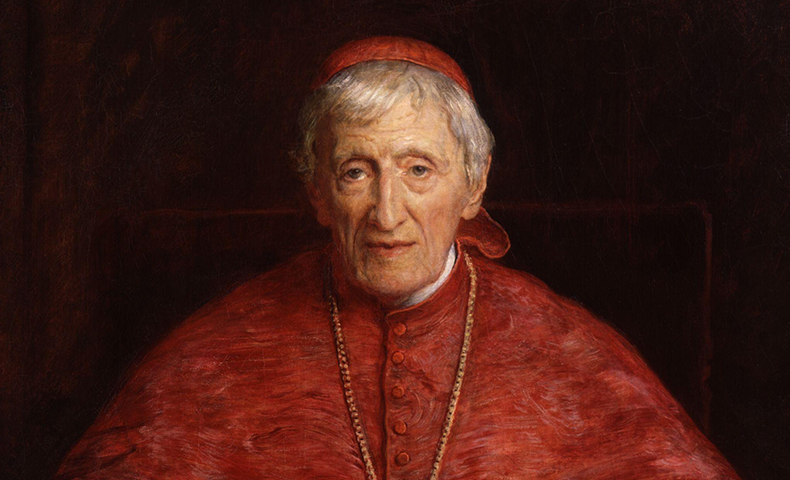VENERABLE JOHN HENRY CARDINAL NEWMAN, died (b: 1801) was an Anglican who converted to the Roman Catholic Church in 1845, later made a cardinal, and in 1991 proclaimed “Venerable” on his way to sainthood. More on this in a moment.
In early life he was a major figure in the Oxford Movement to bring the Church of England back to its Catholic roots. Eventually his studies in history persuaded him to become a Roman Catholic. Both before and after his conversion he wrote a number of influential books, including Via Media, Essay on the Development of Christian Doctrine, Apologia Pro Vita Sua and The Grammar of Assent.
We include him here because Vatican hierarchs, once again demonstrating there are no limits to their homophobia, have now ordered the parting of Cardinal John Henry Newman from his long-time priest friend Fr. Ambrose St. John, in their shared grave in a secluded cemetery on the outskirts of Birmingham, England.
The cardinal’s human remains are to be disinterred, separated from his close friend’s, and buried again in a sarcophagus in the centrally located Birmingham Oratory. For more than a century, John and Ambrose together have rested in the peace of a mutually shared grave — close friends during life, and close friends even after death. That their intimate human friendship, as soul mates while living, could now be disrupted by unsentimental Vatican politics concerning the “proper protocols” pertaining to the process of sainthood, really reveals the deep suspicion and disaffection that Vatican officials sustain in themselves.
It was Cardinal Newman’s dying wish that he be buried with his closest friend in the grounds of the house they had shared as priests. But now, nearly 120 years after his death, Britain’s most famous convert to Roman Catholicism is to be re-interred in a sarcophagus in preparation for his becoming a saint, leaving the remains of his friend behind.
The sexuality of Newman and his circle has long been a subject for conjecture. Much of the evidence is ambiguous. Charles Kingsley’s famous attack on Newman in 1864, which spurred Newman to write his Apologia Pro Vita Sua, contains much of Kingley’s sexualized language; this attack may be interpreted as a conflict over meanings of masculinity. Others wrote of Newman’s lack of virility and his ‘characteristically feminine nature’.
The idea that the Oxford Movement contained a significant stream of homoeroticism was popularized by Geoffrey Faber in Oxford Apostles (1933), in which he portrayed Newman as a sublimated homosexual with feminine characteristics. Certainly the Oxford Movement attracted a number of fervent young men and produced some intense masculine friendships, although in the self-contained male world of Oxford University this was hardly surprising.
Newman did not shun friendships with women, but these were invariably at a distance. There is no evidence that he was ever drawn to a heterosexual union. From the age of 15 he was convinced that it was the will of God that he should lead a single life. In Oxford he taught that celibacy, for the priesthood, was ‘a high state of life, to which the multitude of men cannot aspire’. His deepest emotional relationships were with younger men who were his disciples. The most significant of these were the flamboyant Richard Hurrell Froude, who died in 1836, and Ambrose St John, who lived with Newman from 1843. He preceded Newman into the Roman Catholic Church and became a member of the Birmingham Oratory, where he lived until his death in 1875.
Newman was profoundly affected by the loss of these intimate friends. Newman wrote after the death of Ambrose St John in 1875: “I have ever thought no bereavement was equal to that of a husband’s or a wife’s, but I feel it difficult to believe that any can be greater, or any one’s sorrow greater, than mine.” At his own request, he was buried in the same grave as St John.
